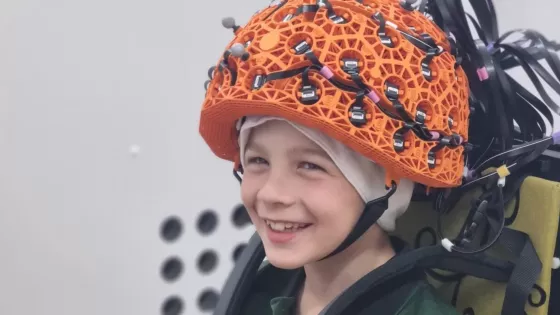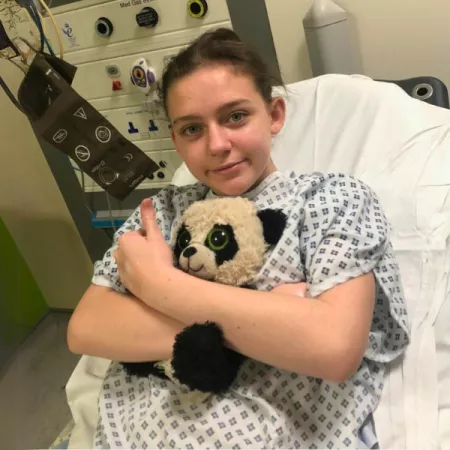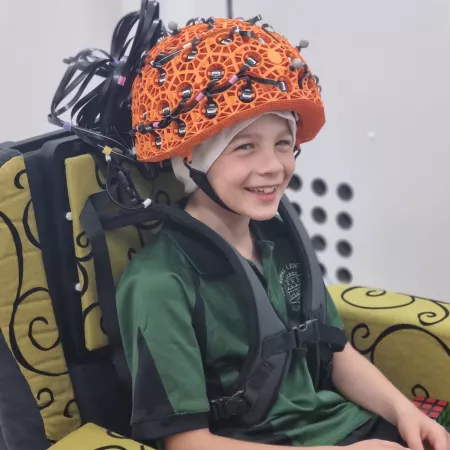Epilepsy is a complex neurological condition that affects many children and young people, often leading to significant challenges in their daily lives. At Young Epilepsy, we are committed to advancing the diagnosis and treatment of epilepsy through innovative technologies like Optically Pumped Magnetoencephalography (OPM-MEG).
This cutting-edge technology, which is currently part of a clinical trial, is revolutionising the way we understand and manage epilepsy, offering hope for quick diagnoses and better-targeted treatments in the future. However, it is important to note that OPM-MEG is not yet available to the general public.
The Role of Technology in Epilepsy Diagnosis
Traditional methods of diagnosing epilepsy, such as Electroencephalography (EEG), have been invaluable but come with limitations. EEG measures electrical activity in the brain, which can help identify abnormal patterns associated with epilepsy. However, it requires patients to wear sensors stuck by glue or tape , which can be particularly challenging for children with sensory sensitivities.
Furthermore, electrical signals are distorted as they travel through the blood vessels, skull, and scalp, making it difficult to pinpoint the exact location of abnormal brain activity. This method can only locate the source within a range of centimetres, which is not precise enough for tasks like presurgical planning. To address this, techniques like magnetoencephalography (MEG) are used.
MEG measures magnetic activity that is less affected by these barriers, allowing for much more precise localisation down to millimetres of brain tissue. However, traditional MEG helmets are designed in a one-size-fits-all manner and are not suitable for children, as they don't adapt well to different head shapes and sizes, leading to weaker signals for individuals who don't fit the standard setup.
OPM-MEG, on the other hand, offers a more advanced and patient-friendly approach. This technology also measures the magnetic fields produced by brain activity, providing a more detailed and accurate picture of brain function, mapping signal down to millimetres of tissue. Unlike traditional MEG systems, OPM-MEG is wearable, adjustable, and adapted for movement, making it much more suitable for children.






